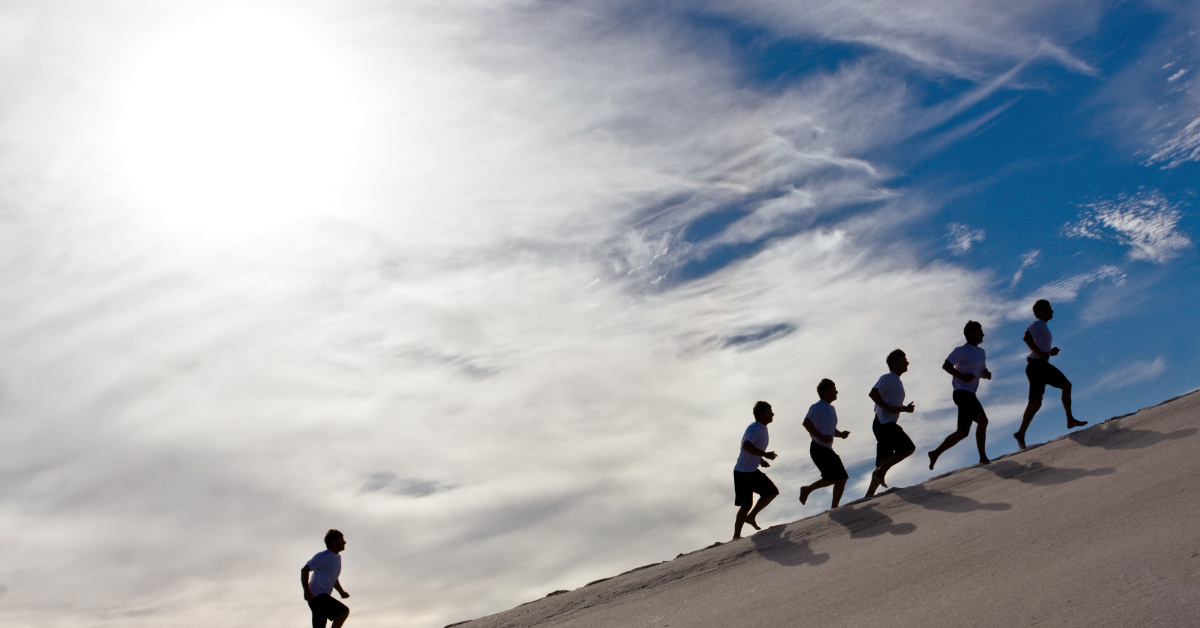
We all want to make the most out of our workouts. If you are a trail runner, the question, “is it better to walk or run uphill?” must have crossed your mind.
Every time you come across a steep climb on your trail runs, does your mind wonders if you should walk or run up it?
Unfortunately, there is no clear or definite answer to this question. However, walking uphill can conserve energy better, be less tough on your joints, and allow you to burn almost the same number of calories as running uphill, making it a slightly better option.
There are a number of factors that need to be taken into consideration, including the degree of the incline and your physical fitness, etc. Whatever ‘feels’ right on the spot is usually the better choice. Here are the pros and cons of both running and walking uphill to help you decide which one you should go for.
I talked to a number of experienced trail runners about this and went through a couple of studies as well before penning this piece to make sure all the information I give out here is accurate.
Is It Better To Walk Or Run Uphill?
When it comes to hiking or running up a hill, there are two different ways to do it – walking and running. Both have their own advantages and disadvantages that you should take into account before making your choice.
Walking uphill is the more traditional method and is generally seen as the safer option. This is because walking is a low-impact activity that puts less stress on your joints and muscles, meaning there’s less chance of injury. Walking also allows you to take in your surroundings and enjoy the view, something that can be difficult to do when you’re running.
However, walking does have its drawbacks. It’s slower than running, so it can take longer to reach your destination. And because you’re going at a slower pace, you may not get the same cardiovascular benefits as you would from running.
If you’re looking to get a good workout and reach your destination quickly, then running uphill is the way to go. Running is a high-impact activity that will get your heart rate up and help you burn more calories. It can be tough on your joints, however, so it’s important to warm up properly before you start and to take breaks when you need them.
So, which is the better option – walking or running uphill? The answer depends on your goals and preferences. If you’re just looking to enjoy the scenery and take things at a leisurely pace, then walking is probably the better choice. But if you’re looking to get a good workout and reach your destination quickly, then running uphill is the way to go.
Walking at a Full Incline Vs. Jogging on a Flat Terrain
Both walking at a full incline and jogging on a flat surface have their own benefits, so it really depends on what your goals are. If you're looking to burn more calories, then jogging on a flat surface is probably the better option. But if you're looking to tone your legs and get a cardio workout, then walking at a full incline is the way to go. Let's take a closer look at both options:
Walking at a Full Incline:
Benefits:
- You can burn more calories walking at a full incline than you can jog on a flat surface.
- Walking at a full incline is a great way to tone your legs.
- It's a low-impact workout, so it's easy on your joints.
Drawbacks:
- It can be difficult to keep up the pace if you're not used to it.
- You may not be able to walk for as long as you can jog, so it might not be the best option if you're looking for a longer workout.
Jogging on a Flat Surface:
Benefits:
- Jogging on a flat surface is a great way to burn calories.
- It's a great cardio workout.
- You can go at your own pace and keep up the intensity for as long as you want.
Drawbacks
- It's a high-impact workout, so it can be tough on your joints.
- You might not burn as many calories as you would walking at a full incline.
- You might get bored if you're used to more challenging workouts.
So, which is better? Walking at a full incline or jogging on a flat surface? It really depends on your goals. If you're looking to burn more calories, then jogging on a flat surface is probably the better option. But if you're looking to tone your legs and get a cardio workout, then walking at a full incline is the way to go. Whichever you choose, make sure to listen to your body and take breaks when you need to. And most importantly, have fun!
Pros and Cons of Running Uphill
Running uphill is a great way to get a challenging workout and build strength. However, there are also some potential drawbacks to consider before hitting the hills.
Pros:
- Improved Cardio Endurance - Running uphill is a great way to improve your cardio endurance. When you run uphill, your heart has to work harder to pump blood to your muscles. This can help improve your overall cardiovascular fitness and make running for long periods of time easier.
- Builds Strength - In addition to improving your cardio endurance, running uphill also helps build strength. When you run against gravity, your leg muscles have to work harder in order to propel you forward. This can lead to increased muscle size and strength over time.
- Burns More Calories - Since running uphill is more challenging than running on level ground. You can expect to burn more calories per mile. This makes it a great way to lose weight or meet other fitness goals.
Cons:
- Hard on the Joints - The impact of running can be hard on your joints, and this is only amplified when you run uphill. If you have any preexisting joint issues, you may want to avoid running hills altogether.
- Can Be Slower - Running uphill can be slower than running on flat ground, which may not be ideal if you’re trying to improve your speed or meet certain time goals.
- Requires More Energy - In addition to being slower, running uphill also requires more energy than running on level ground. This can lead to fatigue more quickly, so it’s important to listen to your body and take breaks as needed.
Overall, there are both pros and cons to running uphill. It’s important to consider these before adding hills to your training regimen. If you do decide to run hills, start slowly and gradually increase the intensity and frequency over time.
Pros and Cons of Walking Uphill
Walking uphill is a great way to get some exercise and fresh air. However, there are also some potential drawbacks that you should be aware of before you head out on your next hike.
Some of the pros of walking uphill include:
- You can burn a lot of calories. Walking uphill is a great way to increase your heart rate and get a good workout.
- You can enjoy the scenery. If you choose a route that takes you through some beautiful scenery, you can really enjoy your walk.
- You can get away from it all. If you live in a city, walking uphill can help you escape the hustle and bustle for a while and clear your head.
Some of the cons of walking uphill include:
- It can be tough on your joints. If you have any preexisting joint issues, walking uphill can aggravate them.
- You may not be able to go as far. If you’re not in great shape, you may find that you can only walk for a short distance before you need to take a break.
- The weather can make it difficult. If it’s very hot or humid out, walking uphill can be quite challenging – and even dangerous. Make sure to check the forecast before you head out.
Overall, walking uphill has some great benefits – but it's important to be aware of the potential drawbacks as well. Choose a route that's suitable for your fitness level, and be sure to dress appropriately for the weather. Then enjoy the fresh air and beautiful scenery!
About THE AUTHOR

Peter Brooks
I’m a hiker, backpacker, and general outdoor enthusiast. I started hiking out of college while working for the National Forest Service, and have been hiking ever since. I’ve been solo hiking and leading hiking groups for two decades and have completed hundreds of small hikes and some majorones such as the Appalachian Train and the Pacific Crest Trail, and hiked on four continents. I’d love to share some of my insight with you.
Read More About Peter Brooks










